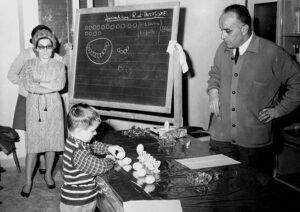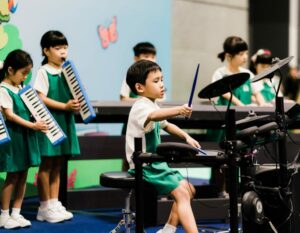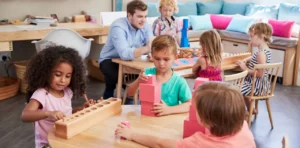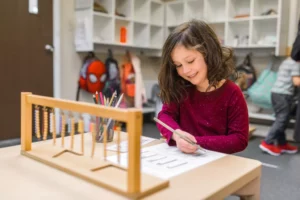Montessori education has become quite popular now, and many parents opt for it. However, there are countless misconceptions about Montessori at home. Here are some common misconceptions that you must be aware of:
#1 Children have complete freedom:
Independence is, indeed, a cornerstone of Montessori. Giving youngest children options, and making our homes accessible boosts their abilities, confidence, and motivation. Montessori gives children independence within clear and safe boundaries and in age-appropriate ways. This is referred to as freedom within limits. Montessori schools provide options and set clear boundaries. Young children want predictability and to know that adults are in charge and that they are safe in their surroundings. When they receive contradictory messages about their limits, they experiment to determine what is and is not acceptable until they feel they can predict their environment again.

Freedom is, for example, how much to eat at mealtimes. A constraint is that we eat while seated and that the adults decide what food is served. Choosing which books to read before bed is a form of liberty. We have a limit of three books. Running and playing as loudly as they want is a form of freedom. A limit is where that kind of running and playing takes place (outside).
#2 Montessori’s most important component is the shelf:
Looking at the internet, the materials on our shelves may be the primary focus of how we practice Montessori at home, but this is not the case. The shelf does not define Montessori.
YOU are the most important material in your environment. Preparation is the first step in everything we do at Montessori. Our language, attitude, and responses to our children have a greater influence on them than anything on their shelves.
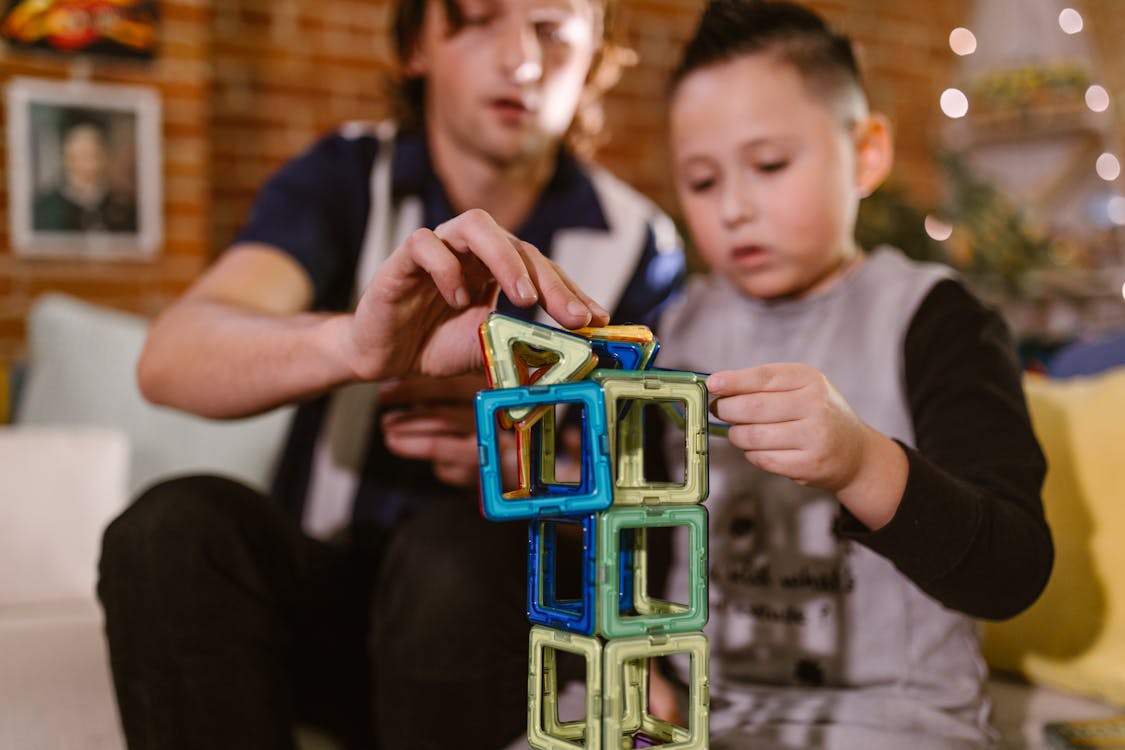
Montessori teaches us to learn with all of our senses engaged. It is about learning through movement, learning through our hands, and most importantly, learning about and in the beautiful natural world in which we live. The most valuable learning environment we can provide for our children is not on their shelf at home, but in the natural world around us.
#3 Children eat and play by themselves:
Infants and toddlers begin eating solid foods at a small weaning table in a Montessori school, but it does not mean that they eat alone. A small table encourages independence by allowing you to get in and out of your chair more easily, and it also reduces throwing and dropping behaviors because there isn’t as much space for food to fall. The weaning table allows children to set their tables and serve their snacks when they are toddlers. Babies and toddlers in Montessori schools are not alone in the room. Teachers usually join them by sitting on the floor or a small cushion. For family dinners and meals, Montessori schools use a high chair that pulls right up to our kitchen or dining table.
Similarly, Montessori schools encourage independent play because it allows children to focus, problem-solve, be creative, and pursue their interests. However, it is always balanced by time spent together. Teachers at Montessori are frequently seated right next to them as they explore toys on their own. They also spend time with them during transitions like diapering or toileting, dressing, preparing food, and cleaning. Montessori is about connection as much as concentration, though this is not always evident in the photographs.
4. Pretend play isn’t allowed:
While it is true that fantasy is discouraged in the early years, pretend play is not.
One reason it may appear that pretend play is discouraged is the emphasis on reality over fantasy. Montessori promotes real-world activities that teach children about their surroundings and provide them with rich sensory experiences. Montessori also prefers books and materials that are grounded in reality. Young children develop a sense of wonder for the world we live in when they read books that describe real places, people, and animals. Books based on true events help to explain the already massive world we live in.
Montessori allows young children to direct their own pretend play, and teachers notice that they create scenes on their own. These scenes are based on what they see in real life and in their books. Pretend play allows kids to work through new experiences and experiment with new ones. When we give toddlers and young children access to everything the real world has to offer, their pretend play becomes richer and more enjoyable for them. Sometimes pretend play is done with dollhouses, and other times it is done creatively with shelf materials.
#5 Montessori Children Lack Social Skills
It is true that in Montessori, children are not compelled to share. They are also not compelled to interact with others. Rather, Montessori lets the child choose whether they want to play alone or with others. In a Montessori classroom, there are always opportunities for both. Montessori schools set a good example by being kind and compassionate to others. The schools provide children with the opportunity to collaborate and resolve conflict on their own.

When children are just toddlers, people frequently bring up the social aspect. Toddlers are not yet social beings. Though toddlers enjoy being around people, especially family members, they are mostly engaged in parallel play, which means they are playing alongside rather than with peers. Children do not share common goals in their play until they are about four years old. Understanding typical social development allows us to tailor our expectations of children’s social play and allows them to take the lead.
#6 Children are Forced to Perform Chores
When people see toddlers washing windows or 3-year-olds sweeping the floor, they may believe that they are being forced to do so. Rather, cleaning is something Montessori schools incorporate into their daily routines. It is something that young children are eager to participate in. In Montessori, teachers welcome even the smallest toddlers to join the daily activities. When toddlers are a part of these important jobs, they feel valued and helpful.
When children are just toddlers, people frequently bring up the social aspect. Toddlers are not yet social beings. Though toddlers enjoy being around people, especially family members, they are mostly engaged in parallel play, which means they are playing alongside rather than with peers. Children do not share common goals in their play until they are about four years old. Understanding typical social development allows us to tailor our expectations of children’s social play and allows them to take the lead.
Montessori teachers encourage cleaning up after themselves as children reach preschool age, for example, when they make a spill, they wipe it up. The goal is not to “make children clean,” but to instill a sense of personal responsibility, care for the shared environment, and learn to work together as a family or community.
In a Nutshell:
So, above are the common misconceptions about Montessori at home. Montessori schools are the best option for your kids. You can search for one of the most excellent Montessori schools near you, and make learning fun for your children. A Montessori school facilitates this very natural process by removing any obstacles that the child may encounter.


